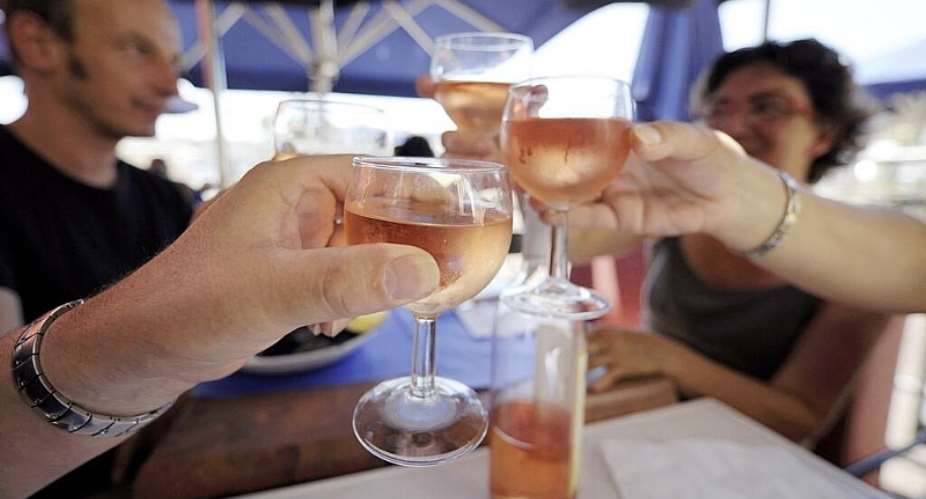Old drinking habits die hard. That's the broad conclusion of a study this week that bundles Europeans into six main cluster groups when it comes to alcohol consumption.
Using data from the World Health Organization, the researchers tracked drinking trends in the EU, Iceland, Norway and Ukraine from the years 2000 to 2019.
Unsurprisingly, cultural factors and geography were seen to deeply influence the drinking patterns of Europeans – with little change observed over the years.
Published in the journal Addiction, the study offers up a comprehensive snapshot of continental quaffing habits while also weighing the related social and health impacts.
Not just cliches
Stereotypes such as wine-soaked Mediterranean dinners and frothy beer garden gatherings in Germany ring true. Stout still flows fast in Irish pubs, while Eastern Europeans continue to bond over shots of flavoured spirits.
“Europe's distinct drinking patterns seem to be deeply rooted in culture and are therefore difficult to change,” said the study's co-author, Jurgen Rehm.
Falling into the wine-drinking cluster are France, Greece, Italy, Portugal and Sweden. Despite drinking the most wine, this group had the lowest overall alcohol consumption because of its moderate appetite for beer and relative disinterest in spirits.
For people in wine-producing nations, a glass is ritually savoured with a meal – perhaps every day, although in moderation. An exception in the group, the Swedes were more likely to crack open a bottle for special occasions or at the weekend.
The wine cluster charted the lowest level of alcohol-related deaths.
Standing out for their high consumption of beer and moderate taste for spirits were Western European countries Germany, Austria and Belgium, as well as their Nordic neighbour Denmark.
In this cluster, tourism was also a major driver of alcohol consumption.
Meanwhile fellow beer-loving nations Croatia, Czech Republic, Hungary, Poland, Romania and Slovakia were united by their shared fondness for spirits.
But the leaders of Europe's alcohol tally board were spirit masters Estonia, Latvia and Lithuania. This cluster of Baltic states charted the highest alcohol consumption per capita, as well as the highest prevalence of binge drinking.
People here experienced Europe's highest rate of alcohol-related deaths.
Health worries
"The association between drinking patterns and health outcomes was striking," said lead researcher Anna Koroyayev.
"Countries with higher spirits consumption, especially without meals, tended to experience more significant alcohol-related harms."
Singled out for having the most non-drinkers overall but conversely a penchant for spirits were Ukraine, Bulgaria and Cyprus. While a significant number of people in this cluster abstained from alcohol, those who did like a drink were prone to overdoing it.
The final cluster was one of binge-drinking nations Finland, Iceland and Ireland.
Finns, who often enjoy a drink while using the sauna, must endure long, dark winters that are made more bearable by social gatherings centred around alcohol. Meanwhile the youthful populations in Ireland and Iceland are known for their lively party cultures.
The researchers concluded by urging countries to prioritise policies that discourage heavy drinking and support public health programmes.
"We could have a life expectancy which is two and a half to three years more if not so many people died of alcohol-attributed deaths," Rehm said.





 Accra Mall’s Chicken Inn Manager jailed 5years for stealing GHC19,904
Accra Mall’s Chicken Inn Manager jailed 5years for stealing GHC19,904
 Bawumia to present Napo as Running Mate to NPP National Council on Thursday
Bawumia to present Napo as Running Mate to NPP National Council on Thursday
 Dangote, Supacem, Ghacem, Diamond Cement, CIMAF, other cement manufacturers boyc...
Dangote, Supacem, Ghacem, Diamond Cement, CIMAF, other cement manufacturers boyc...
 Inflation drops to 23.1% as fiscal and monetary policies take effect
Inflation drops to 23.1% as fiscal and monetary policies take effect
![Finance Minister Dr. Mohammed Amin Adam[left] and Founding President of IMANI Africa, Franklin Cudjoe](https://cdn.modernghana.com/content__/84/56/71202472609-m6itl8w331-img6642.jpeg) Finance Minister Amin Adam has been impressive so far — Franklin Cudjoe
Finance Minister Amin Adam has been impressive so far — Franklin Cudjoe
![Dr. Henry Kwabena Kokofu [File Photo]](https://cdn.modernghana.com/content__/84/56/71202465602-wbreuihuto-c21d3a27-e71e-4770-ac3d-fa06f0d31295.jpeg) 2024 election: Henry Kwabena Kokofu rallies support for Bawumia-Napo ticket
2024 election: Henry Kwabena Kokofu rallies support for Bawumia-Napo ticket
 Alleged lavish Miami trip: Sammy Gyamfi sues Asaase Radio, Wilberforce Asare, tw...
Alleged lavish Miami trip: Sammy Gyamfi sues Asaase Radio, Wilberforce Asare, tw...
 EC to allow vote transfers for students, prisoners and security personnel from J...
EC to allow vote transfers for students, prisoners and security personnel from J...
 Bawumia spokesperson donates GH¢1,000 each to 50 dressmaking graduates in Tano N...
Bawumia spokesperson donates GH¢1,000 each to 50 dressmaking graduates in Tano N...
 Economic crisis: Dealing with Ghana’s challenges cannot be done at a go; it has ...
Economic crisis: Dealing with Ghana’s challenges cannot be done at a go; it has ...
